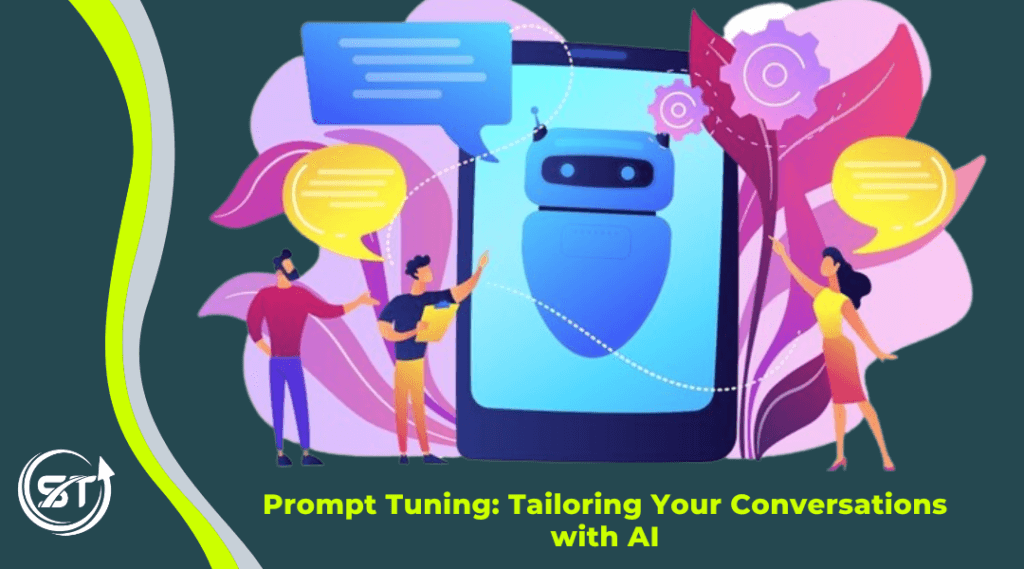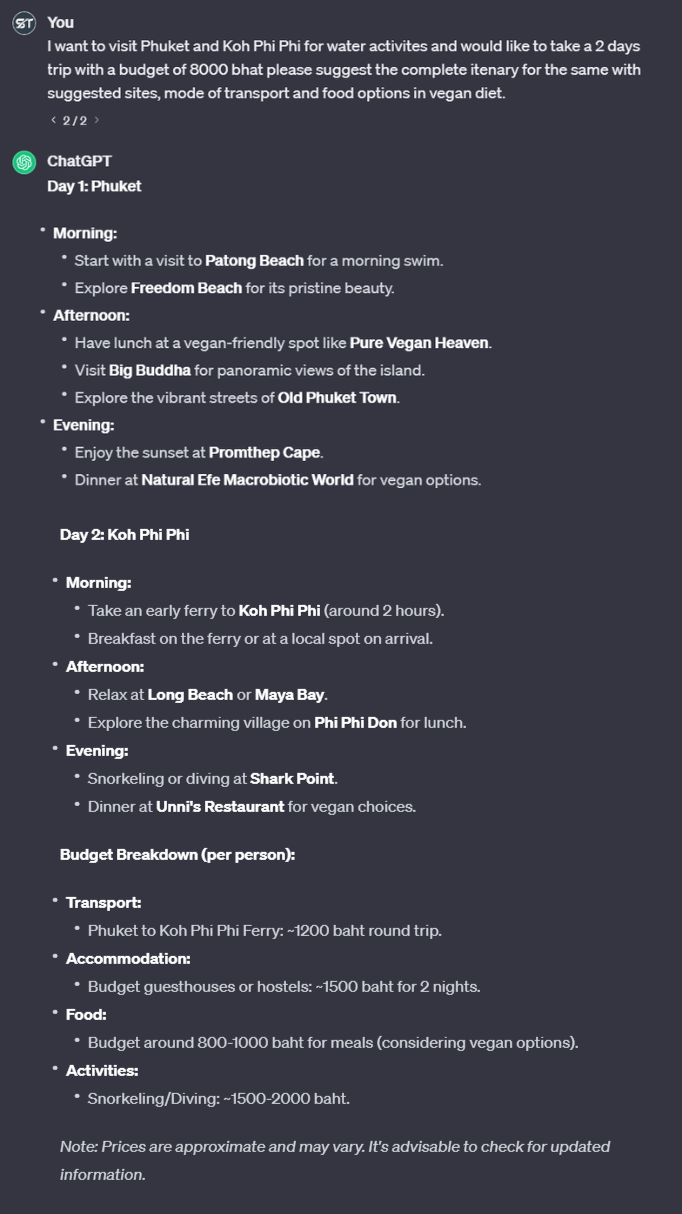
Introduction:
Have you ever wondered how creating content like articles or stories can be challenging and requires creativity, knowledge, and experience to produce satisfying material? With the emergence of new technology, particularly Artificial Intelligence, we now have the capability to utilize advanced tools like Chat GPT, Copy.ai, etc., for creating and generating high-quality content. Let’s dig into how AI is altering the way we interact.
Table of Contents
TogglePrompt Tuning?
Artificial intelligence systems are rapidly advancing and transforming how we interact with technology, and a key starting point is giving prompts. So what is prompt tuning? It is like giving specific instructions or guidance to a computer program, especially a large language model, that understands human language to get better and more accurate results. When you use computers to talk or ask for information, you want them to answer correctly. Prompt tuning is about figuring out the best way to ask questions so the computer understands exactly what you want and can give you the most helpful response. There are two fundamental categories for prompt tuning, and they are soft prompts and hard prompts:
Soft prompts:
Soft prompts are like giving AI a lot of room to be creative. They are open-ended and flexible, just like suggesting a general idea without following any strict rules. This lets AI come up with all sorts of imaginative content. When content creators want a variety of creative outputs, they use soft prompts to let AI explore different ideas freely.
Examples:
“Create a piece of content that explores the memories associated with a particular attar”
Or “Craft a poetic piece that captures the essence of a fresh rain shower in a field of lavender.”
Or “Create a content on world where animals and humans can communicate. What would their conversations be like?”
Below is the snapshot of the conversation with AI about the Thailand tour.

Hard prompts:
In contrast, hard prompts are like giving clear instructions to AI. They are very specific and do not leave much room for creativity. Instead, they guide AI to create content within a set of rules. Hard prompts are great when you need the content to be precise and follow specific criteria closely. It is like having a strict set of guidelines for AI to follow.
Examples:
“Write a 300-word article about the benefits of drinking eight glasses of water a day. Include information on hydration, skin health, and energy levels.”
Or “Compose a step-by-step guide on setting up a budget for beginners. Include categories like savings, expenses, and tips for sticking to the budget.”
Or “Write a summary of the key features of a new smartphone model, including specifications like camera quality, battery life, and available storage options.”
Below is the snapshot of the conversation with AI about the Thailand tour with specifics like budget, food options, etc.

Components of Prompt Tuning
Various components collectively shape the interaction between users and language models.
1. Instructions:
Giving clear instructions is very important as they tell the AI what we want it to do, like suggesting tourist destinations in Thailand. It is important to be very clear and specific with these instructions because that guides the AI in creating the right content. Whether we are asking it to answer questions or come up with cool stories, the instructions are like the script that helps the AI understand what we are looking for. So, if you want the AI to give you the best results, ensure your instructions are spot on.
2. Context:
When you ask for something, like planning a trip, the context is like the setting for that request. It is crucial for AI to know the details, like if you are talking about places such as Phuket and Koh Phi Phi Don. Providing these details is like giving your friend the clues to help you better. So, context is the key to ensuring AI understands and shows you exactly what you want.
3. Input Data:
Input data is like the information we share with AI, whether it’s a paragraph to summarize or ideas to generate. In the Thailand visit example, the AI didn’t have input data since it was asked to create new ideas. It is not always needed, like when asking for creative suggestions. The quality of this data is key, it shapes how smart and accurate AI becomes. By carefully choosing and curating input data, we are giving AI the best tools to understand and respond to our needs.
4. Output Indicators:
When talking to AI, think about what you want; it could be specific details or general ideas. Let’s say you plan a tour to Phuket and Koh Phi Phi Island; you can tell AI to focus on those details. It’s like giving it structural requirements for the output. Also, you might not always need to talk about how well AI is doing, but using some indicators helps. These are like little signs that tell AI if it is doing a good job, things like relevance or matching a specific style. It’s like giving AI a checklist to follow.
5. Refinement:
Talking to AI is like finding the perfect recipe. Mix and match instructions, details, and ideas until you get exactly what you want. It is like planning a trip to Phuket and Koh Phi Phi Island. You tell AI your budget, food preferences, and transportation needs. Then, you see how well it does by checking a few signs like relevance or style.
Prompt Tuning Tips for Effective Conversations with AI
1. Clear Instructions:
Start by being clear in your instructions. Whether you ask for travel recommendations or creative ideas, mention your needs clearly. For instance, specify details like budget, preferred food options, and transportation needed when planning a trip. The clearer your instructions, the better AI can understand and deliver.
2. Do Experimentation:
Prompt tuning is a bit like mixing instructions. Feel free to experiment with different combinations of instructions, context, and input data. Try variations to see what works best for your desired output.
3. Assess Output Indicators:
After each interaction, take a moment to check the output. Look for output indicators such as relevance and specific style. These indicators offer insights into how well AI is performing. Use them as your guide to evaluate and refine the conversation.
4. Repeat and Adjust:
Prompt tuning is a constant process. Don’t hesitate to change and adjust if the output isn’t exactly what you’re looking for. Modify your instructions, twist the context, or experiment with different input data. Small adjustments can lead to significant improvements.
5. Learn from Each Interaction:
Treat every conversation with AI as a learning opportunity. Observe how different inputs influence the outputs. Recognize patterns and understand what sounds best. This ongoing learning process enhances your ability to communicate effectively with AI.
Limitations of AI Chat Tools:
1. Lack of Human Touch:
While proficient in data-driven responses, AI chat tools lack the human touch. They may struggle to grasp the subtle hints and context a human writer effortlessly covers, potentially leading to responses that miss the mark in understanding user intent.
2. Dependency on Training Data:
The power of AI chat tools is the quality and diversity of their training data. Biases or gaps in the training data can result in incomplete information, impacting the accuracy and reliability of generated content.
3. Inability to Handle Complex Scenarios:
AI chat tools may hesitate when confronted with tricky scenarios that demand deep domain expertise. The deep-rooted complexity of certain topics can challenge AI’s ability to provide suggestions and comprehensive responses.
4. Limited Creativity and Originality:
While AI excels at pattern recognition, it may struggle to create content with the creativity and originality that human writers effortlessly contribute. This limitation becomes evident when aiming for distinctive perspectives or creative outputs.
5. Challenge with Ambiguous Queries:
Ambiguity in user queries can pose a challenge for AI chat tools. Clear and specific instructions produce optimal results, and ambiguous input may lead to inaccuracies or responses that miss the user’s intended meaning.
6. Ethical Concerns:
AI-generated content may raise ethical concerns. Especially in sensitive industries or topics, users must exercise caution and review AI-generated content to ensure conformity with ethical standards.
7. Limited Knowledge:
AI chat tools rely on the knowledge installed in their training data. Real-time information or updates beyond this scope may be inaccessible, limiting the tool’s ability to provide the latest and most accurate details in rapidly changing fields.
8. Difficulty in Handling Humor and Tone:
Infusing content with humor, tone, or specific style preferences can be a stiff block for AI chat tools. They may struggle to understand and replicate the subtleties of humor or tone, impacting the overall effectiveness of the content.
Wrapping Up:
When talking to AI, how you guide it matters. Mixing soft and hard tuning methods gives you the power to shape AI’s responses. Simple tips like clear instructions and smart experimenting help you get the best out of AI. One thing we have to remember is that AI has its limits. It needs your guidance. Think of prompt tuning as a journey where you refine and adjust.












